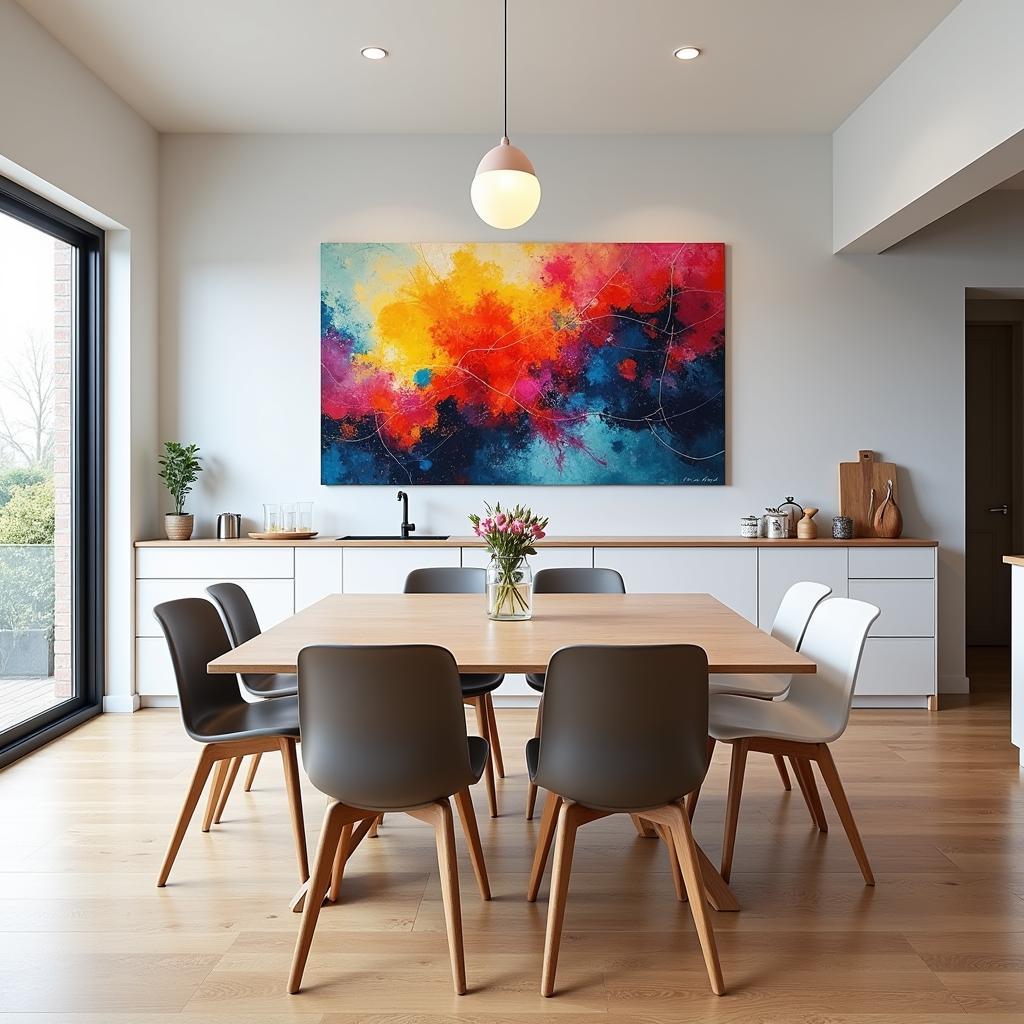Unveiling the Depths: A Guide to Depth Map Art
Depth Map Art is an exciting and rapidly evolving form of digital art that uses depth information to create stunning visuals. Instead of relying solely on traditional elements like color and shape, depth map art introduces a third dimension, depth, to produce captivating illusions and breathtaking landscapes. This technique, gaining popularity among digital artists and enthusiasts alike, opens up a whole new world of creative possibilities.
What Exactly is Depth Map Art?
Imagine a grayscale image where different shades of gray represent varying distances from the viewer. That’s essentially what a depth map is. These maps, often generated using 3D software or specialized cameras, serve as the foundation for depth map art. Artists then utilize these maps in conjunction with digital tools and techniques to manipulate light, shadow, and perspective, thereby transforming flat images into multi-dimensional masterpieces.
The Allure of Depth: Why is it Gaining Traction?
The rising popularity of depth map art can be attributed to several factors. Firstly, it offers a fresh and innovative way to perceive and interact with visual art. The interplay of light and shadow made possible by depth maps adds a sense of realism and depth rarely seen in traditional art forms. Secondly, the technique allows for incredible creative freedom. Artists can manipulate depth information to craft surreal landscapes, abstract compositions, or even reimagine existing images in entirely new and exciting ways.
Creating Depth Map Art: Tools and Techniques
Several software programs cater specifically to creating and manipulating depth maps, each offering unique features and functionalities. Popular choices include:
- Adobe Photoshop: A versatile tool with dedicated features like the Displace filter and 3D tools that allow for intricate depth manipulation.
- Blender: A powerful open-source 3D creation suite that offers robust tools for generating and exporting depth maps.
- GIMP: A free and open-source image editor that, while not as feature-rich as Photoshop, still provides adequate tools for basic depth map manipulation.
The process typically involves:
- Obtaining a Depth Map: Artists can either generate their own depth maps using 3D software or source them online. Numerous resources offer free and paid depth maps.
- Importing the Depth Map: The chosen software is used to import the depth map, usually as a grayscale image.
- Manipulating the Depth: Artists can use various tools and filters to manipulate the depth information, creating effects like parallax, displacement, and depth of field.
- Adding Color and Texture: Color and texture are added to the image, using the depth information to guide the application and create realistic lighting and shadow effects.
Beyond Still Images: Exploring the Potential
The application of depth map art extends far beyond static images. Its principles are now being explored and implemented in:
- Animation: Adding a mesmerizing sense of depth and movement to animated sequences.
- Virtual Reality: Creating immersive and interactive experiences by leveraging depth information to enhance the feeling of presence.
- Augmented Reality: Blending the real world with digitally generated elements that interact with the environment in a believable manner.
As technology continues to advance, the creative possibilities with depth map art are limitless. With its ability to transform the way we perceive and interact with digital art, depth map art is poised to become an increasingly influential and integral part of the digital art landscape.
FAQ
Do I need to be a 3D artist to create depth map art?
Not necessarily. While familiarity with 3D software can be beneficial for generating custom depth maps, many resources offer pre-made depth maps. Additionally, tools like Photoshop offer user-friendly features for manipulating depth information.
What are some common challenges faced by artists new to depth map art?
Understanding how light interacts with depth can be challenging initially. Achieving realistic lighting and shadow effects requires practice and experimentation with different tools and settings.
Can I sell artwork created using depth map techniques?
The commercial use of depth map art depends on the licensing terms of the software, tools, and resources used. Always ensure you have the necessary permissions before selling or distributing your work.
Are there online communities or resources for learning more about depth map art?
Yes, numerous online communities and platforms dedicated to digital art offer tutorials, forums, and resources specifically for depth map art. Websites like ArtStation and DeviantArt often feature inspiring work and insightful breakdowns from experienced artists.
Need help?
Our customer service team is available 24/7 to assist you.
Phone: +84 24 6257 3573
Email: danteum@gmail.com
Address: Savico Megamall, 7-9 Đ. Nguyễn Văn Linh, Gia Thụy, Long Biên, Hà Nội 10000, Việt Nam.


